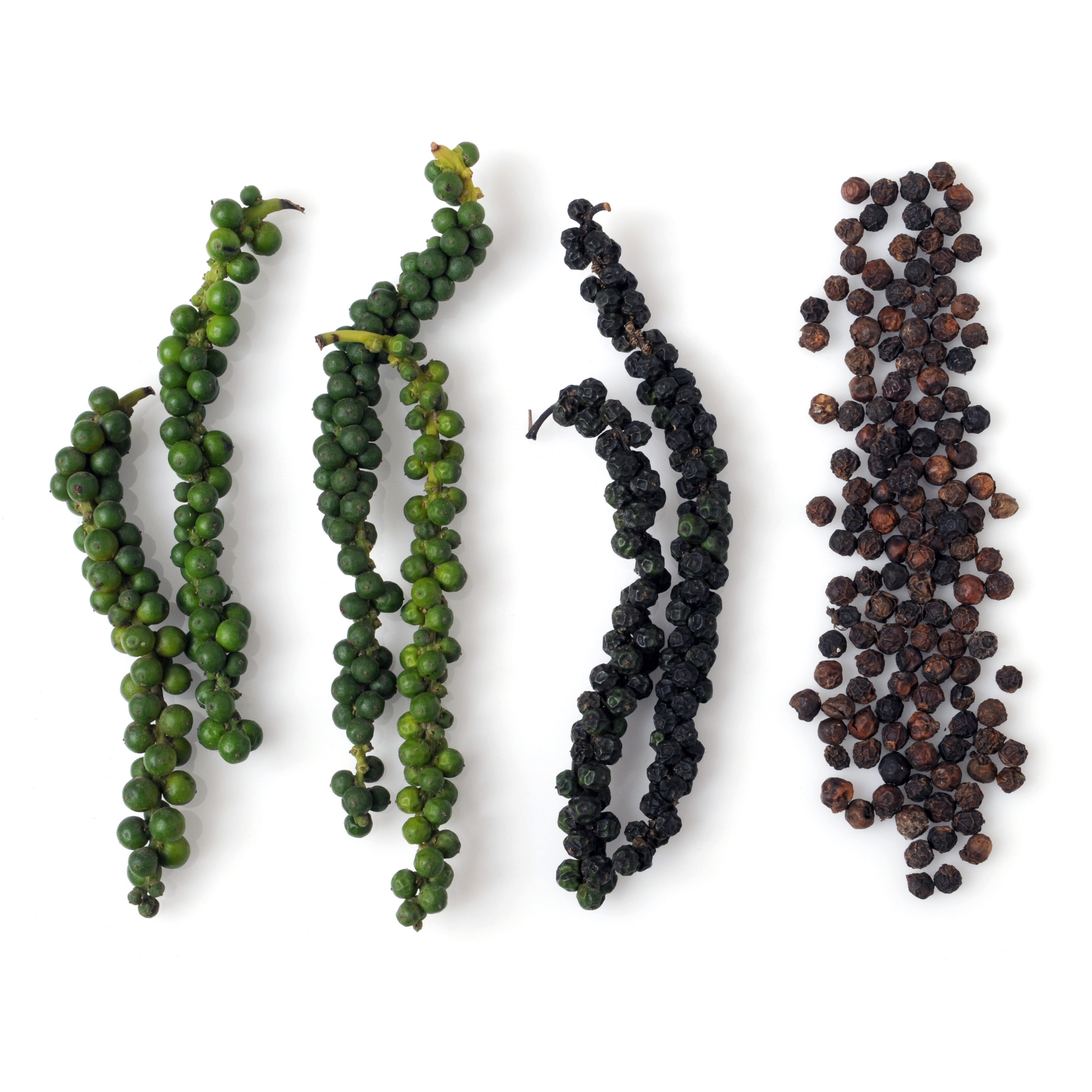How Are Black Peppercorns Grown, Harvested, and Processed?
Black peppercorns, often called the "king of spices," are one of the most widely used spices in the world. Their bold, pungent flavor enhances countless dishes, making them a staple in kitchens globally. But have you ever wondered how these tiny, flavorful peppercorns make their way from farms to your table? Let’s explore the fascinating journey of black pepper—how it’s grown, harvested, and processed.
1. Cultivation: Growing Black Pepper
Ideal Climate & Soil
Black pepper (Piper nigrum) thrives in warm, humid tropical climates with plenty of rainfall. It grows best in well-drained, rich loamy soil with a slightly acidic pH. The spice is mainly cultivated in India (especially Kerala), Vietnam, Indonesia, and Sri Lanka.
Propagation & Planting
Black pepper plants are climbing vines that need strong support to grow. Farmers usually propagate them through stem cuttings, which are planted at the base of trees or wooden poles. These vines can grow up to 4 meters (13 feet) high and take around 3 to 4 years to start producing fruit.
Growth & Maintenance
The plants require regular watering, but they must not be waterlogged. Shade-grown black pepper tends to have better flavor due to slow ripening. Organic fertilizers like compost or manure are commonly used to nourish the vines. Farmers also prune the plants to encourage better growth and higher yields.
2. Harvesting: Picking the Pepper Berries
Black pepper vines begin flowering and fruiting after 3-4 years. The small, round pepper berries grow in clusters and change color as they mature.
When Is Black Pepper Harvested?
The ideal harvest time is when the berries turn from green to yellowish-red. Harvesting too early results in less flavor, while overripe berries may fall off the vine.
How Is It Harvested?
- The berries are carefully handpicked to avoid damaging the vines.
- Only ripe or nearly ripe berries are collected, as uniform ripening doesn’t occur.
- The harvested berries are gathered in baskets and sent for processing.
3. Processing: Drying the Peppercorns
Once harvested, the fresh pepper berries undergo a drying process to develop their characteristic black, wrinkled appearance and intense aroma.
Traditional Sun-Drying Method
- Cleaning: The harvested berries are washed thoroughly to remove dirt and impurities.
- Boiling (Optional): Some farmers briefly blanch the berries in hot water for a few minutes to reduce drying time and enhance the black color.
- Sun-Drying: The cleaned berries are spread out in thin layers on bamboo mats or concrete floors and left to dry under direct sunlight for 5 to 7 days.
- Regular Turning: Farmers turn the berries frequently to ensure even drying and prevent mold growth.
- Final Moisture Check: The peppercorns are dried until they reach about 10-12% moisture content, ensuring a crisp texture and long shelf life.
Machine Drying (Modern Method)
In some commercial processing units, machine dryers are used to speed up the drying process, especially in regions with unpredictable weather. However, traditional sun-drying is still preferred for maintaining the best flavor profile.
4. Sorting, Grading & Packaging
Once dried, the black peppercorns are sorted based on size, color, and quality. Larger, well-formed peppercorns fetch a higher price as they have better oil content and flavor. The graded peppercorns are then packaged in airtight bags to preserve their aroma and shipped to markets worldwide.
Final Thoughts
The journey of black peppercorns from farm to table is a labor-intensive process that requires patience, skill, and the right environmental conditions. By the time these tiny, flavorful beads reach your spice rack, they have undergone months of careful cultivation, harvesting, and processing. The next time you sprinkle fresh black pepper onto your dish, you’ll appreciate the craftsmanship and dedication behind this essential spice!



Share: